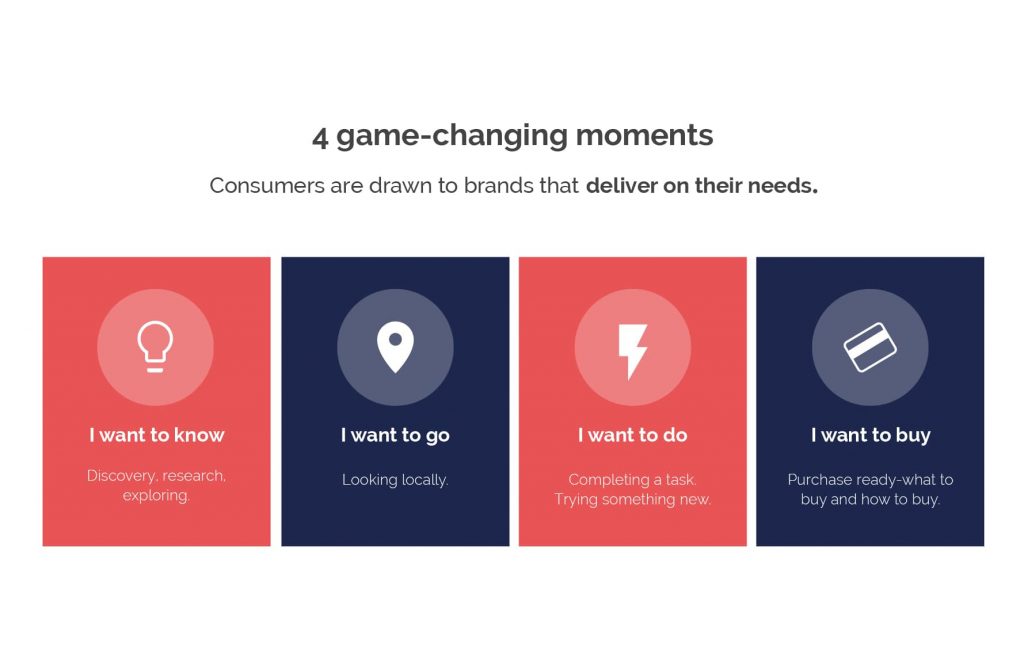It’s that time of year again…Time to take stock of an incredible year for the financial services industry (not all of it good, sadly) and look forward to the trends we see impacting finance marketers in 2019.
Last year we predicted the New Payments Platform (NPP) rollout, expanded fintech regulation sandbox, and widespread adoption of blockchain as the biggest trends of the year.
While they may not have been the biggest stories (Royal Commission, anyone?), they continued to move the Australian finance industry forward and saw technology increasingly used to meet customer needs.
Our crystal ball for 2019 predicts…
1. The year of customer centricity

2019 will see the full launch of four neo-banks into the Australian market. Xinja, Volt, 86400 and Up, are all at various stages of gaining a banking license and launching offers, which they claim will offer alternative ways to bank for Australians.
Exactly what that means is yet to be revealed. But one thing’s for sure, their offers are promoted as customer centric, with a strong focus on transparency, convenience and a great digital experience – ie, faster, simpler, easier. It’s a potentially compelling lure for customers fed up with poor to appalling experiences with traditional banks.
The question is, will it be enough to convince Australians to make the move, especially in the context of the Royal Commission outcomes? While the arrival of the Tech Four will definitely disrupt the status quo, current Roy Morgan research surprisingly reveals bank customer satisfaction has only dropped 4% in the wake of the Royal Commission, so the new kids on the block will have their work cut out for them.
How will the Big Four react to the double whammy of the commission and customer focused fintech competitors? If past behaviour is an indication of future behaviour, then possibly with indifference. However, we feel that this year will see a change. The disposing of wealth and insurance businesses and a renewed focus on the core should see the capacity to drive new and better outcomes for customers. Not fundamental, but certainly in terms of being far more sensitive to human needs, rather than always putting shareholders first.
Of course, it never does any harm that there’s going to be some interesting competitive changes too…
2.Integrating voice into CX

With the rise of voice activated AI mobile and smart devices in the home, we’ve seen the way we interact with our technology change rapidly over the last two years.
Using voice AI is now an everyday occurrence for many. It’s estimated each month 40 million people use Siri, while Microsoft Cortana has 133 million users. It’s also estimated around 12% of all Google searches are via voice, and this is expected to rise to 30% by 2020.
As voice recognition technology continues to improve, it will bring significant disruption and opportunities to digital marketing. SEO, UX and UI design are currently focused on how prospects or customers find an organisation or interact with it through a screen. But few businesses are proactively addressing voice as part of their UX.
So what does this shift to voice search mean for financial marketers?
Voice search is different from desktop or mobile search. Rather than receiving several pages of search results, voice delivers just one or two, narrowing the user’s browsing behavior.
Ensuring your site is the source of that answer is a challenge few marketers are currently rising to meet, but one that offers huge opportunities.
Think about how your content tags are aligned with colloquial or spoken terms, rather than more formal written ones. It’s worth considering we say things differently to how we type,
A good starting point is implementing schema.org. This can help Google more accurately identify information on your website and improve your chances of getting to the top spot.
3. Micro-moments rule the customer journey
It’s estimated Australians spend around 10 hours a day using an internet-connected device. However, we may be reaching a point known as ‘peak content’ where people simply cannot absorb any more information.
Customers are bombarded by content, ads, offers, emails, push notifications, social media, and news, which makes it difficult for marketers to gain and hold their attention. This is where micro-moment marketing becomes useful in the attention economy.
The micro-moment is a new type of consumer behavior, which occurs when people reflexively turn to a device, usually a smartphone, to act on a need to learn, do, get to know, or buy something.

According to Google’s content marketing team Think with Google users experience micro-moments on average 150 times a day.
Why are micro-moments so important? Because, in general, people make instant decisions on what to buy, where to go, or which restaurant to eat at, which gives you a span of about three seconds to catch their attention. Micro-moments work, because they provide consumers with the right information exactly when they need it.
Ultimately, the whole consumer decision journey is a combination of these micro-moments across all channels and devices. The successful brands of tomorrow will be those meeting consumer needs in these micro-moments.
Financial institutions have the added advantage of access to years of historical data that can be used to predict behaviour and create personalised micro-moments for specific audiences. AI land SEO will be key to creating content and predicting search habits.
4. Content design will be the next big thing

Content marketing is still incredibly important, with the Global industry expected to be worth $412 billion by 2021. That’s an extraordinary number, but we’d boldly suggest a lot of that spend is wasted through misalignment of content intention and user need.
In our experience here at Yell, government is leading the way, embedding content design as part of agile methodology and design sprints when building new digital products and services.
The Department of Health, ServiceNSW and the Digital Transformation Agency are pioneering this approach that finds out what customsers need – before a project starts – rather than helicoptering in over the top with the business need.
This focus on human centred design is a nimble and effective way of creating personalised content based on customer needs and key interactions
The business strategy is still the master blueprint, but it’s just a well meaning gesture if it doesn’t marry up to your customer needs.
Content design, aligned with audience needs and crafted from user personas delivers personalised content. This will increasingly be the way to reach your customers and poke through the content avalanche.
5. Marketing automation is here to stay

Clearly, we’re loving marketing automation (MA), with the software industry’s size expected to grow to $5.5bn in 2019.
Automation and AI advances are helping marketers scale more effectively, make decisions more quickly, and save money. Automation is also useful for the all-important but oft-overlooked task of amplification and distribution. In 2019, email marketing automation in particular will become more integrated with content marketing delivered at the right time in customer journey across omnichannel touchpoints.
What marketers need to keep in mind as they increasingly embrace qutomation is that, while it’s incredibly useful in spitting out dry factual content about products and services, the content that connects and draws people to your brand needs to be smart, entertaining and relevant and robots haven’t quite mastered that – yet.
6. Syncing service design to the expectation economy

The expectation economy is continually lifting customer expectations and, as a result, expectation transfer continues to increase. In 2019, finance brands will need to know more than ever about what competitors are offering – and what they’re doing better than you.
Expectation transfer is reinforced by findings from Assurant research that shows 90% of customers think best in class experiences raise their expectations for similar companies, while 83% said first class experiences raise their expectations for ALL companies.
For better or worse, blame Amazon. The Amazon Effect is often credited with pioneering the expectation economy. This has led to consumers expecting on-demand sales and support, and a seamless customer experience 24 hours a day regardless of device. The Amazon Effect is now so prevalent, the retail behemoth is the first port of call for 55% of US shoppers.
To know what customers want in the future means using service design to take a lens to successful businesses, including those in other industries, and looking at the customer expectations they create. Analyse and distil your findings and design services that not only meet, but surpass their expectations.
In short, get ready to lift your game in 2019 because your customers have already raised the bar. They just haven’t told you yet.
The takeaway
So what does all this mean? It means 2019 is the undisputed Year of the Customer. The humble consumer is rising up with torches and pitchforks at the gate. Technology is still the driving force behind change. But this year it’s simply the tool delivering what customers are demanding. They days of push marketing are over. The customer is now telling us what they want – and the finance sector needs to have a glass to the wall and listen carefully.













